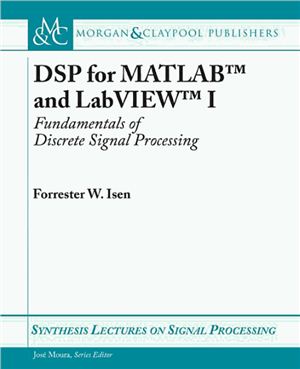

Most ebook files are in PDF format, so you can easily read them using various software such as Foxit Reader or directly on the Google Chrome browser.
Some ebook files are released by publishers in other formats such as .awz, .mobi, .epub, .fb2, etc. You may need to install specific software to read these formats on mobile/PC, such as Calibre.
Please read the tutorial at this link: https://ebookbell.com/faq
We offer FREE conversion to the popular formats you request; however, this may take some time. Therefore, right after payment, please email us, and we will try to provide the service as quickly as possible.
For some exceptional file formats or broken links (if any), please refrain from opening any disputes. Instead, email us first, and we will try to assist within a maximum of 6 hours.
EbookBell Team

0.0
0 reviewsVolume I consists of four chapters.The first chapter gives a brief overview of the field of digital signal processing. This is followed by a chapter detailing many useful signals and concepts, including convolution, recursion, difference equations, LTI systems, etc. The third chapter covers conversion from the continuous to discrete domain and back (i.e., analog-to-digital and digital-to-analog conversion), aliasing, the Nyquist rate, normalized frequency, conversion from one sample rate to another, waveform generation at various sample rates from stored wave data, and Mu-law compression. The fourth and final chapter of the present volume introduces the reader to many important principles of signal processing, including correlation, the correlation sequence, the Real DFT, correlation by convolution, matched filtering, simple FIR filters, and simple IIR filters. Chapter 4, in particular, provides an intuitive or first principle understanding of how digital filtering and frequency transforms work, preparing the reader for Volumes II and III, which provide, respectively, detailed coverage of discrete frequency transforms (including the Discrete Time Fourier Transform, the Discrete Fourier Transform, and the z-Transform) and digital filter design (FIR design using Windowing, Frequency Sampling, and Optimum Equiripple techniques, and Classical IIR design). Volume IV, the culmination of the series, is an introductory treatment of LMS Adaptive Filtering and applications.The text for all volumes contains many examples, and many useful computational scripts, augmented by demonstration scripts and LabVIEW Virtual Instruments (VIs) that can be run to illustrate various signal processing concepts graphically on the user’s computer screen.An Overview of DSP
Discrete Signals and Concepts
Sampling and Binary Representation
Transform and Filtering Principles
A Software for Use with this Book
B Vector/Matrix Operations in M-Code
C Complex Numbers